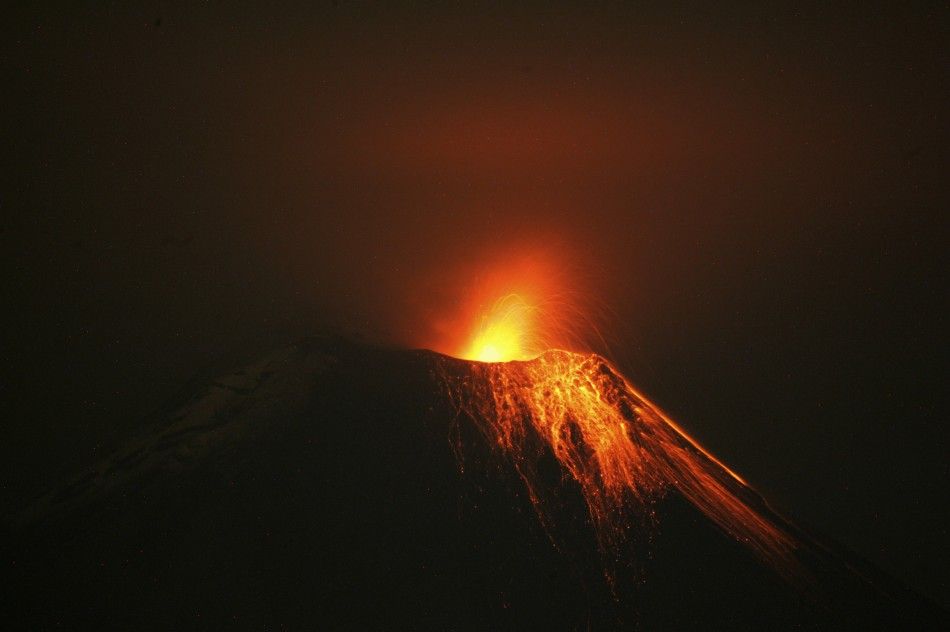Tungurahua Volcano in Ecuador Begins to Erupt, People Evacuate (PHOTOS)
The Tungurahua volcano in Ecuador spewed ash up to 4 kilometers in the sky and produced superheated gas flow (pyroclastic flows) approximately one kilometer down the volcano flank Tuesday.
The eruption created large clouds of gas and ash above the summit and is reportedly directed towards the southeast and the west, near Banos, about 178 km (110 miles) south of Ecuador’s capital Quito, the Geophysical Institute of Ecuador said.
Tungurahua, meaning Throat of Fire in Ecuador's native Quechua language, is one of eight active volcanoes in the Andean nation. It has been in an active state since October 1999 and erupts almost every year.
Most recently, theTungurahua volcano began erupting Monday, creating an ash plume, which reached an average height of 3 kilometers. A slight volcanic ash fall was reported in sectors such as Apple, Choglontús and Runtún Pondoa.
Although no volcanic activity accompanying falling ash was reported on Tuesday, the authorities are encouraging residents living near the volcano to evacuate, as presence of dense clouds in the region have made it difficult to monitor the development of pyroclastic flows.
“Since the current eruptive process began very abruptly and has generated since its inception several pyroclastic flows that have hit the top of the volcano's flanks, and since there is no evidence in the monitoring system indicating the time of generation, the movement, direction and extent of these flows, it is necessary that people do not stay in areas considered high risk, especially in the valleys and ravines that descend the volcano,” the Ecuadorean Institute for Geophysics said in an update.
Check out the latest pictures of the eruption of Tungurahua volcano in Ecuador.





© Copyright IBTimes 2025. All rights reserved.




















